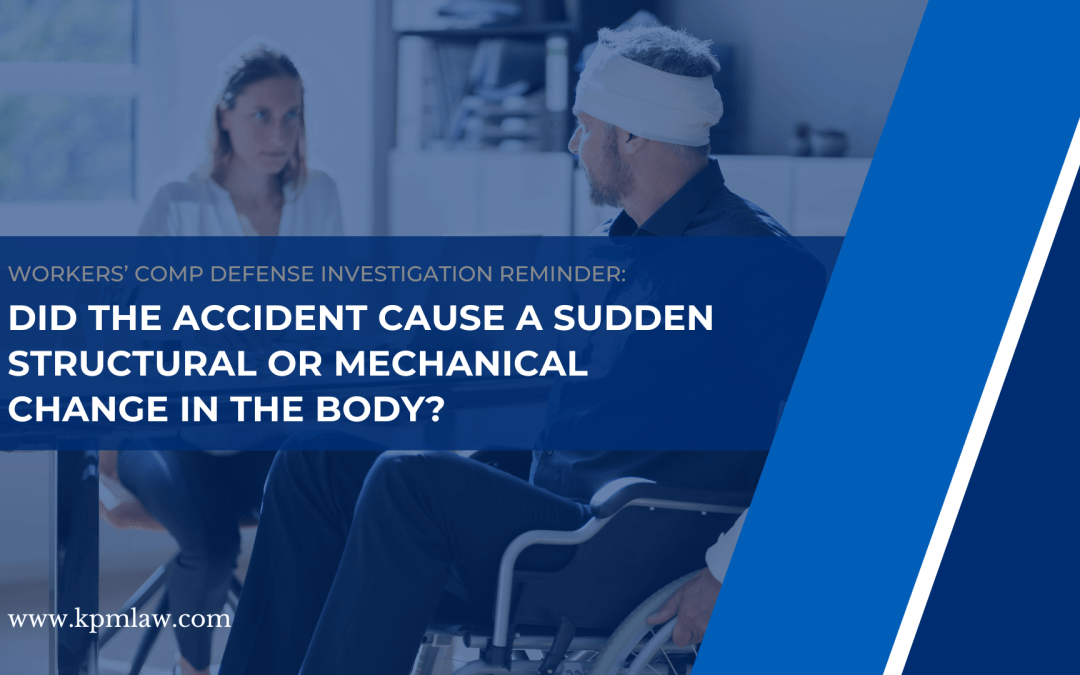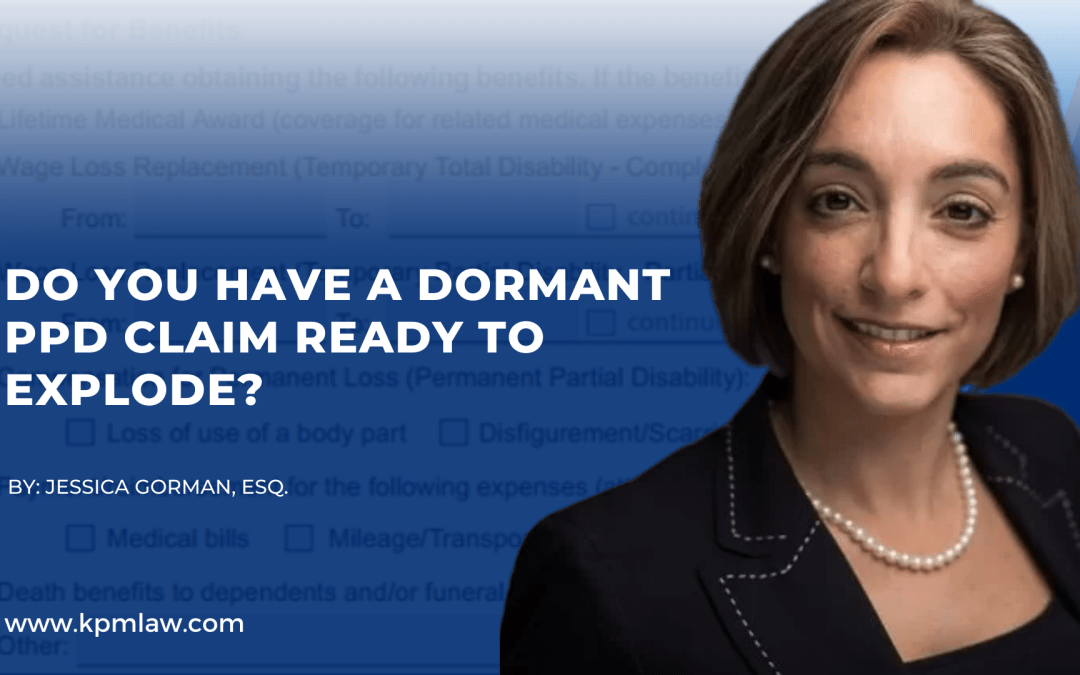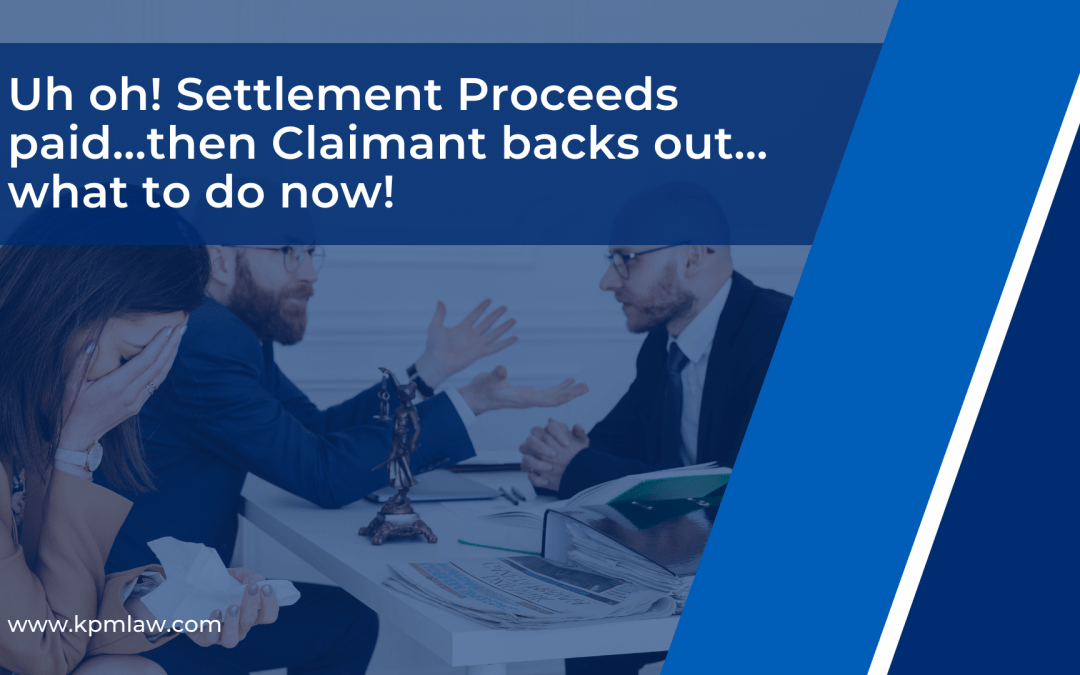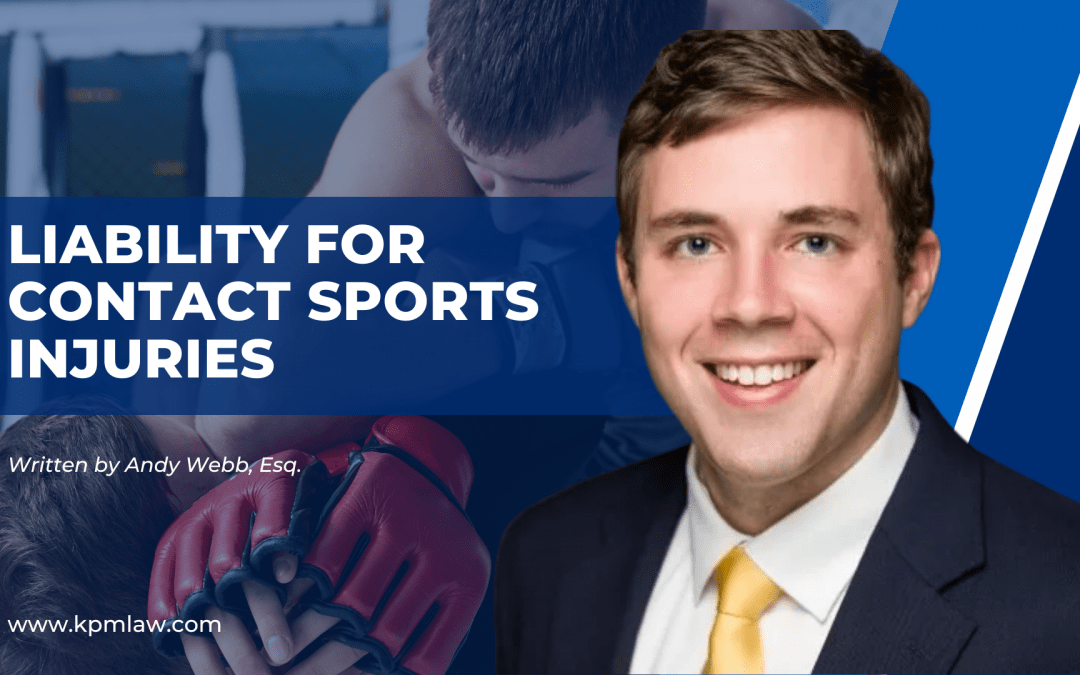
by KPM LAW | Sep 20, 2023 | Uncategorized
Written by Megan Wagner, Esq.Edited by Bob McAdam, Esq.It is important for Workers Compensation adjusters and attorneys to closely examine whether a Virginia claimant has suffered a “sudden mechanical or structural change in the body.” If not, the claim should be denied. However, this elementary defense is often overlooked. In Virginia many claims are defended on the basis that a claimant did not suffer an “injury by Accident” under the Act. Every claimant alleging an injury by accident is required to establish each of the following: (1) an identifiable incident; (2) that occurred at some reasonably definite time; (3) an obvious sudden mechanical or structural change in the body; and (4) a causal connection between the incident and the bodily change. Although each element of this four-part test must be shown, frequently the analysis of both claims adjusters and defense attorneys is focused on only the first two prongs of the test.Recent Commission Opinions show that disregarding the “mechanical change element” may result in accepting claims that are not compensable under the Act. The Commission’s split 2-1 decision in Davis v. Wal-Mart Associates, Inc., JCN VA02000037952 (Feb. 27, 2023) provides a helpful illustration of this legal issue. In Davis the Full Commission affirmed the finding of the Deputy Commissioner that claimant failed to establish a “sudden mechanical or structural change in the body.” The claimant in Davis reported a sharp pain in his back while kneeling to place a twelve-pack of ginger ale on a bottom shelf. Plain film x-rays taken at the hospital noted postoperative changes from a prior surgery but no acute fracture, dislocation or disease. A...

by KPM LAW | Jul 14, 2023 | Uncategorized
Above is the bottom part of the Claim Form found on the Commission’s website. When this form is utilized by the claimant, at least 75% of the time the claimant will check all of the boxes (except for the “death benefits”) box. In a typical injury by accident case, the only real relief the claimant is seeking is temporary total disability benefits (in addition to medical benefits). However, since the PPD box is checked this issue must be dealt with by the deputy commissioner at the hearing. Typically, the deputy commissioner will ask the claimant how she wants to handle this claim. In many circumstances (especially if the claimant is represented) the PPD claim will be held in abeyance and not adjudicated at the hearing. After the hearing, an opinion is issued. In many cases you might pay TTD for a closed period. However, the PPD claim is still lying dormant, ready to reemerge later. You may have paid all the outstanding medical bills and the closed period of compensation. The claimant might no longer be treating. So, you forget about the claim. A year later, you receive a Notice of Hearing or a 30-Day Order pertaining to the PPD claim. You must reengage counsel, with all those attendant expenses. How could this be avoided? Our strategy is as follows: At the hearing, move to dismiss without prejudice the PPD claim, rather than hold it in abeyance. If the deputy commissioner does not grant this relief, we suggest the following. After receiving the opinion awarding a closed period of TTD benefits file a Rule 1.3 Motion to Dismiss...

by KPM LAW | Apr 24, 2023 | Uncategorized
Public Schools across the nation are entrusted with our children to educate, feed, nurture and provide the tools necessary for our next generation to lead fulfilling lives. As part of these responsibilities, schools must have robust precautions in place to ensure that students with allergies, and specifically food allergies, have policies and procedures in place to prevent incidents that could have dire consequences. Having a robust and specific Risk Management plan in place to prevent and deal with these situations is of the utmost importance. Facts and Background A Nebraska school district has agreed to pay $1 million to the family of a teen who died of anaphylaxis in May 2022. A 14-year-old student at Liberty Middle School in Papillion, Nebraska, was given a granola bar by his teacher. Unfortunately, the bar contained peanuts and the student had a peanut allergy. Tragically, the student later died in hospital following a severe allergic reaction. During its March meeting, the Papillion La Vista Community school board received notification of settlement with the student’s parents related to the wrongful death claim. The school board’s liability insurance carrier has agreed to pay a lump sum settlement the the family of the deceased student. In exchange for the settlement, the student’s parents have agreed to release the school district from liability in connection with the unfortunate incident. The settlement was reached through a Nebraska probate court process, not a civil lawsuit. As a result, we have relatively little information about the claims and defenses of the respective parties. What little information is known was obtained through social media postings of the family. According to...

by KPM LAW | Apr 24, 2023 | Uncategorized
You have just sent a claimant a check for $100,000 as consideration for a full and final settlement. The claimant then files a motion to vacate the settlement, but he has already cashed the check. What should you do? The Virginia Workers’ Compensation Commission is very liberal when it comes to backing out of settlements. Either side has up to thirty (30) days after the settlement has been approved by the Commission to back out without penalty. The most common reason an insurer might back out of a settlement is that it discovers fraud. For example, the insurer might find out that the claimant is working elsewhere and did not report that income. Or, surveillance might reveal that the claimant is not really injured. The most common reason why a claimant might back out of a settlement is that the claimant discovers that her injury is much worse than she thought, and she will need expensive surgery in the future, or that the recent surgery failed. In Radtz v. Crossroads Fuel Service Inc. (03/16/2023) the Full Commission addressed the issue of how to handle a matter when the settlement proceeds have been dispersed but the claimant wants to back out of the settlement. In Radtz, the parties settled the claim. The settlement was approved by the Commission on 01/24/2023. The claimant timely moved to vacate the settlement because he needed additional surgery. The Commission gave the claimant 60 days to remit the settlement proceeds to the insurer. If the proceeds were not returned, the settlement would not be vacated. Practice Pointers: If you settle a matter favorably, pay the...

by KPM LAW | Apr 24, 2023 | Uncategorized
In Virginia, “a person’s voluntary assumption of the risk of injury from a known danger operates as a complete bar to recovery for a defendant’s alleged negligence in causing the injury.” Arndt v. Russillo, 231 Va. 328, 332, 343 S.E.2d 84, 86 (1986). When it comes to contact sports, courts from across the country have found that a player assumes the risk of injury inherent to the sport. For Example see Balthazor v. Little League Baseball, Inc., 62 Cal. App. 4th 47, 49, 72 Cal. Rptr. 2d 337, 339 (1998); Crace v. Kent State Univ., 185 Ohio App. 3d 534, 539 (2009); Brown v. Stevens Pass, Inc., 97 Wn. App. 519, 522-523, 984 P.2d 448, 450 (1999); and Morgan v. State, 90 N.Y.2d 471, 482-483, 685 N.E.2d 202, 206 (1997). When a participant steps onto the field, court, or other playing surface, they voluntarily accept the risks of injury that come with that sport. This includes the risk of injury caused by another participant due to the other player’s careless conduct, “because in the heat of an active sporting event a participant’s normal energetic conduct often includes accidentally careless behavior.” McGarry v. Sax, 158 Cal. App. 4th 983, 999 (2008). The rules governing liability for injuries sustained in contact sports are not as clear in Virginia as in other states. The Virginia Supreme Court has not affirmatively ruled on a player’s assumption of risk in the context of contact sports, but the case law of Virginia tends to support the general rule applied in other states—that a participant voluntarily assumes risks inherent to the sport. The Virginia Supreme Court...






